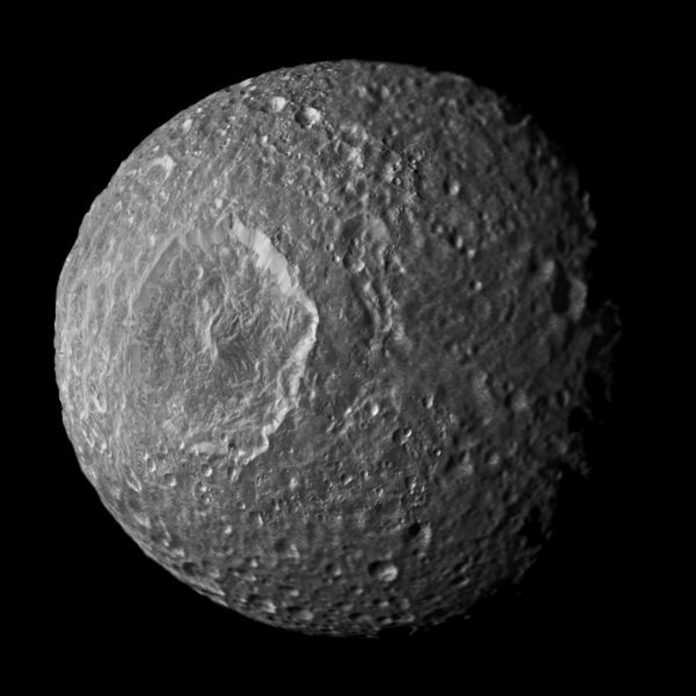The chronology of Saturn’s moons, especially Titan, has been limited by a lack of strong constraints on the cratering rate, low number statistics for small counts of large‐diameter craters, and uncertainty about whether impactors are mostly heliocentric impactors orbiting the Sun or planetocentric impactors orbiting Saturn itself.
In a new study, Planetary Science Institute Associate Research Scientist Samuel W. Bell has developed a new chronology for Saturn’s moons.
Bell, author of the study, said, “Previous chronologies of the Saturn system have assumed that the craters on the moons of Saturn virtually all came from objects orbiting the sun.”
“If the impacts came solely from sun-orbiting objects, the relative cratering rate would be much, much higher the closer the moons are to Saturn. However, the crater densities of the oldest surfaces of Mimas, Tethys, Dione, Rhea, and Iapetus are all relatively similar.”
“It would be too much of a coincidence for the ages of the oldest surfaces on each moon to vary by the exact amounts necessary to produce broadly similar crater densities. As a result, it seems much likelier that the impactors come from objects orbiting Saturn itself, moonlets that would be too small to detect with current technology. There are many important implications of this new chronology.”
“For instance, under the assumption that all the impactors orbit the Sun, the possibility that any of the moons are younger than 4 billion years old is ruled out. However, with impactors orbiting Saturn itself, the moons could be younger, as suggested by astrometric observations of tidal orbital evolution. The assumption of impactors orbiting the Sun results in the conclusion that the surface of Titan is probably at least 4 billion years old, even though Titan shows clear evidence of active weathering.”
“With the new chronology, Titan could be quite young, which is much more consistent with observations of lakes, riverbeds, dunes, and mountains. With the new chronology, we can much more accurately quantify what we do and don’t know about the ages of the moons and the features on them.”
“The grand scale history of the Saturn system still hides many mysteries, but it is beginning to come into focus.”
Journal Reference:
- Samuel W. Bell. Relative Crater Scaling Between the Major Moons of Saturn: Implications for Planetocentric Cratering and the Surface Age of Titan, Journal of Geophysical Research: Planets (2020). DOI: 10.1029/2020JE006392
